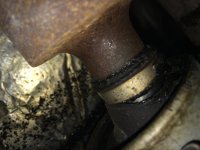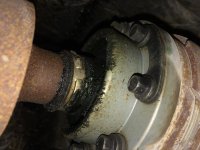SD_JKU
New member
I'm sorry for the neub question but I am finding lots of information that seems to conflict.
Looking to lift my new 16' sport JKU and I've pretty much decided on a three inch lift and 33 or 34" tires. It's a daily driver with a 50 mile round trip commute four days a week. With some, days off / vacation trail riding, camping, exploring. I'm not into rock crawling but I'd like be able to clear some higher obstacles on the trails.
Most manufacturers list their and at the bottom of the description page they say something like "we recommend new driveshafts".
I've noticed two reasons for the drive shaft replacement issue... Exhaust pipe clearance and geometry issues for the change in height. Many people say it's not an issue. They put a spacer in the exhaust pipe area or some thing like that and as far as the geometry goes I keep hearing "I've had my lift for a year and have had no issues."
My questions are. Why do the manufacturers recommend a new shaft? What does a new shaft do for you? Seems the angle is still the same and that still causes strain on the u-joint.
Thanks for your input.
-- Ben
Looking to lift my new 16' sport JKU and I've pretty much decided on a three inch lift and 33 or 34" tires. It's a daily driver with a 50 mile round trip commute four days a week. With some, days off / vacation trail riding, camping, exploring. I'm not into rock crawling but I'd like be able to clear some higher obstacles on the trails.
Most manufacturers list their and at the bottom of the description page they say something like "we recommend new driveshafts".
I've noticed two reasons for the drive shaft replacement issue... Exhaust pipe clearance and geometry issues for the change in height. Many people say it's not an issue. They put a spacer in the exhaust pipe area or some thing like that and as far as the geometry goes I keep hearing "I've had my lift for a year and have had no issues."
My questions are. Why do the manufacturers recommend a new shaft? What does a new shaft do for you? Seems the angle is still the same and that still causes strain on the u-joint.
Thanks for your input.
-- Ben


